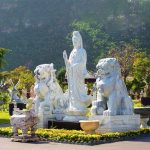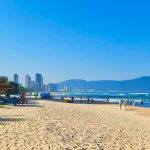Hey there, I'm Farley C, a local travel blogger who's spent years exploring Vietnam. Having visited Han Market Danang countless times, I want to share my honest experience about this iconic shopping spot. No fancy exaggerations here – just real insights from someone who shops here regularly!
List of Contents
- 1. About Han Market Danang
- 2. When to Visit: Han Market Opening Hours
- 3. Market Layout: What to Expect
- 4. What to Buy at Han Market in Da Nang
- 5. Haggling: An Essential Skill at Han Market
- 6. Han Market vs. Con Market: Which to Choose?
- 7. Tips for an Amazing Han Market Experience
- 8. My Personal Experience at Han Market Da Nang
- 9. Conclusion: Why Han Market is a Must-Visit
1. About Han Market Danang
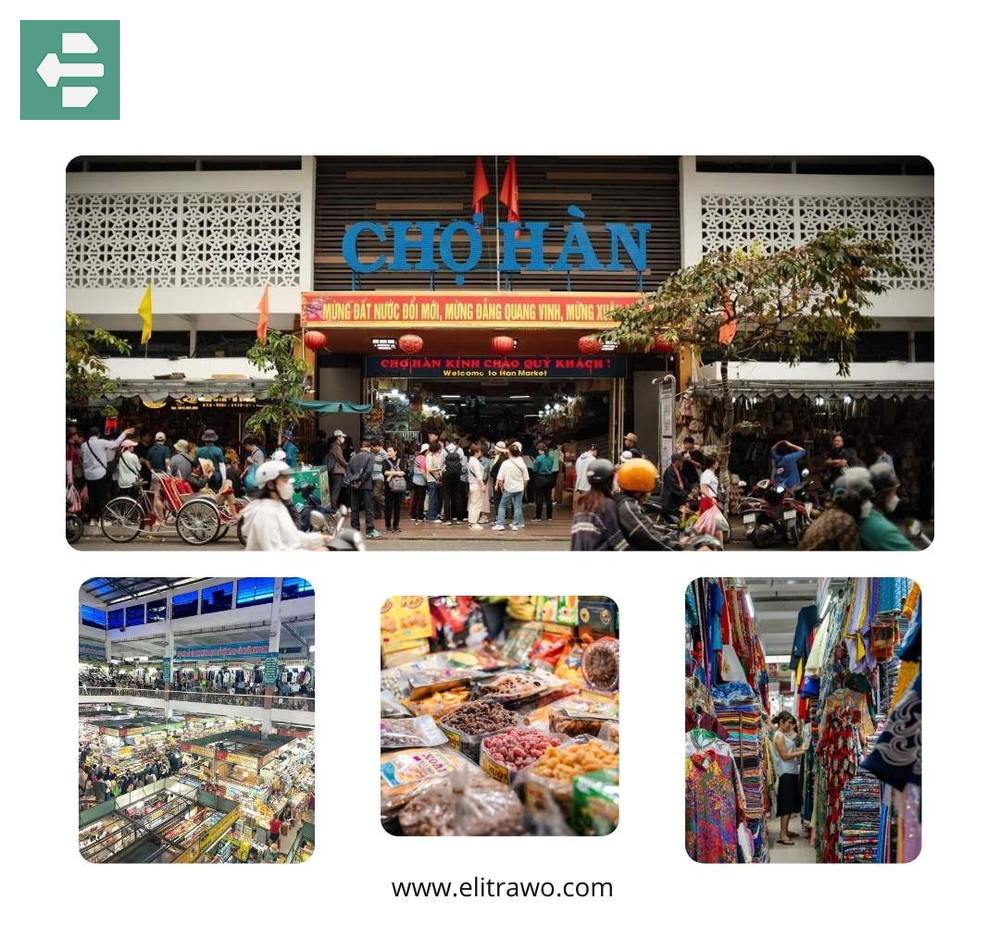
Han Market (or Chợ Hàn as we locals call it) isn't just another tourist attraction – it's where many Da Nang residents do their everyday shopping. I still remember my first visit here as a kid, holding my grandmother's hand while she haggled over fresh produce prices!
Located near the Han River, this market has become one of the city's most recognizable landmarks. What makes it special isn't just what you can buy, but the authentic slice of Vietnamese daily life you'll experience.
Have you ever wondered how this market became such an important part of Da Nang's identity?
1.1. Location and How to Get There
Han Market in Da Nang sits at 119 Tran Phu Street in Hai Chau District. What makes it super convenient is its location at the intersection of four main streets – Tran Phu, Bach Dang, Hung Vuong, and Tran Hung Dao.
As a local, I usually zip over on my motorbike, but for tourists, I recommend:
- Taxi/Grab: About 130,000 VND ($5 USD / $8 AUD) from beach resorts
- Motorbike rental: Fun if you're comfortable with Vietnamese traffic
- Walking: If you're staying downtown, it's just a 20-minute stroll from Dragon Bridge
- Cyclo: More expensive but gives you that classic Vietnam experience
Pro tip: I always use Grab bike for short trips around Da Nang – it's affordable and you get to experience the city like a local.
1.2. The Fascinating History Behind Han Market
Not many tourists know this, but Han Market Da Nang Vietnam has a rich history dating back to French colonial times. My grandfather used to tell me stories about how it started as a small trading post near the river.
The market was officially opened in the 1940s when the French built a train system called Tourane Marché to transport goods. Back then, locals actually called it the “rich market” because it attracted wealthier shoppers!
In 1989, they completely renovated it to the 28,000 square meter space we see today, with 576 stalls and 36 kiosks. It reopened in 1991 and has been an essential part of Da Nang life ever since.
Want to know when you should visit for the freshest goods and best experience?
2. When to Visit: Han Market Opening Hours
During my hundreds of visits to Han Market, I've noticed there's often confusion about the Han Market opening hours. Let me clear things up – the market officially operates from 6:00 AM to 7:00 PM daily.
But here's what most travel sites won't tell you – while some sources claim it stays open until 10:00 PM, that's not really accurate. Most vendors start packing up around 7:00 PM, especially those selling fresh produce and food.
Wondering which time of day offers the best shopping experience?
2.1. Best Times to Visit Han Market
After years of shopping here, I've figured out the rhythm of Han Market in Danang:
- Early Morning (6:00-8:00 AM): This is when I come to buy seafood. You'll see local chefs selecting the day's freshest catches, and the energy is incredible. The produce has just arrived, so everything is super fresh!
- Mid-Morning (9:00-11:00 AM): Personally, this is my favorite time for casual shopping. The stalls are fully set up, but it's not too hot or crowded yet.
- Late Afternoon (4:00-6:00 PM): If you're looking for deals, this is when to come. Vendors often reduce prices on perishable items as the day ends. I frequently stop by after work to grab ingredients for dinner.
Do yourself a favor and avoid Han Market between 12:00-2:00 PM during summer. The heat can be brutal, and the ventilation isn't great in some sections.
Curious about what you'll actually find once you're inside?
3. Market Layout: What to Expect
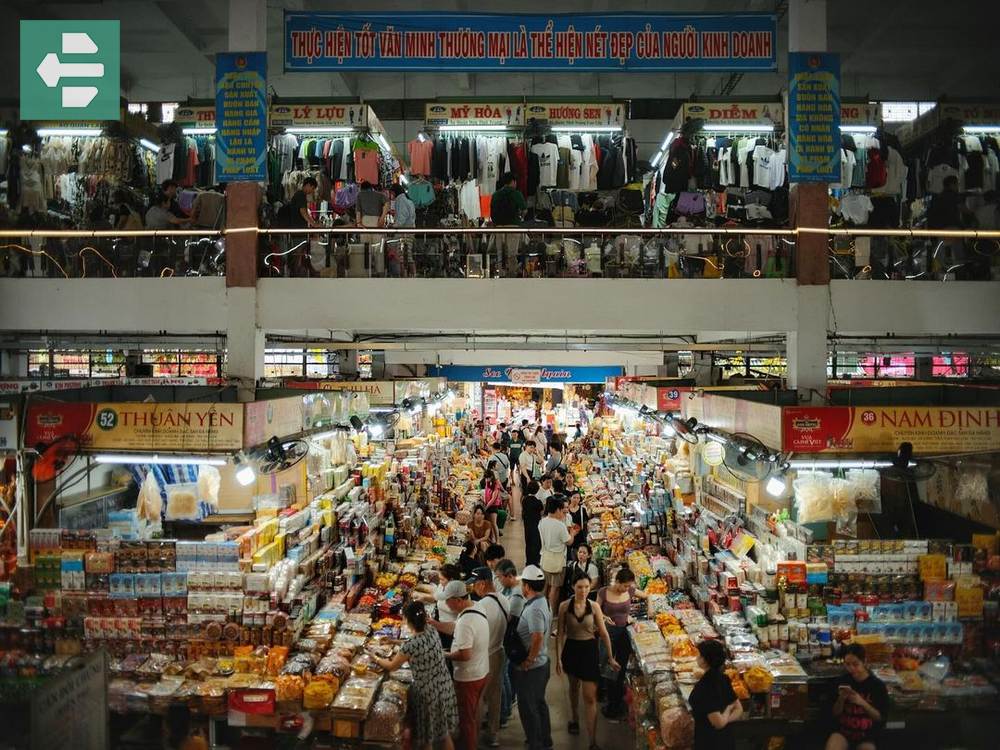
First-time visitors to Han Market Danang often feel a bit overwhelmed – I know I did when I first started shopping here independently! The colors, sounds, and activity can be a lot to take in, but there's actually a logical organization to the apparent chaos.
Let me walk you through it like I would if we were exploring together.
Need to know what each floor offers?
3.1. Ground Floor: Food Paradise
The ground floor is where I spend most of my time, especially on weekend mornings. It's dedicated to all things food – fresh produce, seafood, meats, dried goods, coffee, sauces, and Vietnamese snacks.
My favorite section is definitely the seafood area. The variety is impressive – from halibut and stingray to squid and crabs kept alive in oxygenated bowls. Last week, I bought some fresh tiger prawns for about 180,000 VND per kg (roughly $7 USD or $11 AUD) – much cheaper than you'd pay at restaurants!
The spice section is another highlight – the aromas are incredible, and vendors are always happy to explain how to use unfamiliar ingredients in Vietnamese cooking.
What about shopping for non-food items?
3.2. First Floor: Shopping Heaven
Whenever friends visit from abroad, I always take them to the first floor for souvenirs and clothing. This entire level is packed with clothing, fashion accessories, bags, sporting goods, and gifts.
I recently picked up some beautiful handmade rattan placemats for my apartment – they cost me just 80,000 VND each (about $3 USD or $5 AUD). The same items would easily be triple that price in tourist shops!
The tailoring services here are also worth checking out. My Australian friend had a custom ao dai (traditional Vietnamese dress) made in just two days for around 600,000 VND ($23 USD or $37 AUD).
Wondering what specific items are worth buying at Han Market?
4. What to Buy at Han Market in Da Nang
Based on countless shopping trips and feedback from my foreign friends, here are my top recommendations for visitors:
4.1. Fresh Seafood & Local Delicacies
If you're staying somewhere with kitchen access, buying seafood from Han Market Da Nang Vietnam is a must! The quality and prices are unbeatable.
Last month, I helped my American friends buy ingredients for a seafood BBQ. We got:
- 1kg of fresh clams for 70,000 VND ($2.70 USD or $4.40 AUD)
- 500g of squid for 80,000 VND ($3.10 USD or $5 AUD)
- 1kg of tiger prawns for 180,000 VND ($6.90 USD or $11.20 AUD)
Even if you can't cook, watching the vendors expertly clean and prepare seafood is an experience itself!
What unique Vietnamese specialties should you look for?
4.2. Authentic Vietnamese Specialties
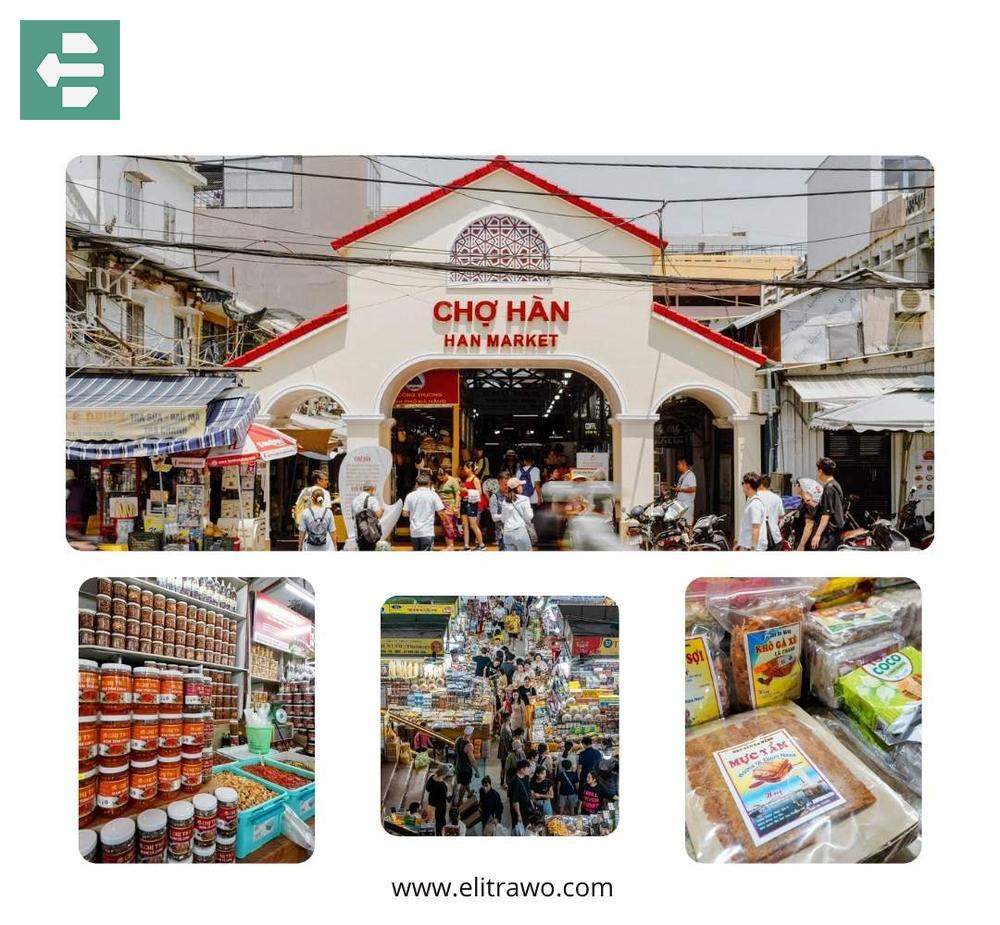
My foreign friends always ask what food items they should take home, so here are my honest recommendations:
- Fish sauce: Central Vietnam makes the best! A quality bottle costs 50,000-80,000 VND ($1.90-$3.10 USD or $3.10-$5 AUD). Look for Can shop or Nhut Hoang shop – they're where my family has bought sauce for years.
- Coffee: Vietnamese coffee is amazing! A 500g bag of good beans is around 100,000 VND ($3.80 USD or $6.20 AUD).
- Dried fruits: My Australian friends always stock up on these. A package of dried mango or jackfruit runs about 50,000 VND ($1.90 USD or $3.10 AUD).
- Spices: Unique blends like Ly Son garlic or Da Nang chili paste make great souvenirs at 30,000-40,000 VND ($1.15-$1.50 USD or $1.90-$2.50 AUD).
What about non-food souvenirs to bring home?
4.3. Clothing and Souvenirs
The clothing section offers amazing value – just last week I bought a comfortable linen shirt for 150,000 VND ($5.80 USD or $9.30 AUD).
For souvenirs, I recommend:
- Handmade crafts: Rattan and bamboo items like baskets or place mats (70,000-200,000 VND / $2.70-$7.70 USD or $4.40-$12.40 AUD)
- Traditional fabrics: Beautiful patterns unique to Central Vietnam (100,000-300,000 VND / $3.80-$11.50 USD or $6.20-$18.70 AUD)
- Non-touristy t-shirts: Look for ones with Vietnamese phrases or local designs (80,000-150,000 VND / $3.10-$5.80 USD or $5-$9.30 AUD)
But wait – are these prices fixed, or should you be haggling?
5. Haggling: An Essential Skill at Han Market
Let me be honest – as a local, I ALWAYS negotiate at Han Market Danang. It's expected and part of the experience!
Most items don't have price tags, so vendors quote based on what they think they can get – especially from foreign tourists. Don't be afraid to negotiate, but please be respectful.
My personal haggling strategy:
- Always remain friendly and smile
- Start at about 40-50% of the initial price (this is what locals do)
- Be prepared to walk away (sometimes vendors will call you back with a better price)
Last month, my friend from the US wanted a handmade bag with an initial price of 400,000 VND. We negotiated down to 350,000 VND ($13.46 USD) – less than half the original price!
But what if you're short on time – should you visit Han Market or its bigger competitor, Con Market?
6. Han Market vs. Con Market: Which to Choose?
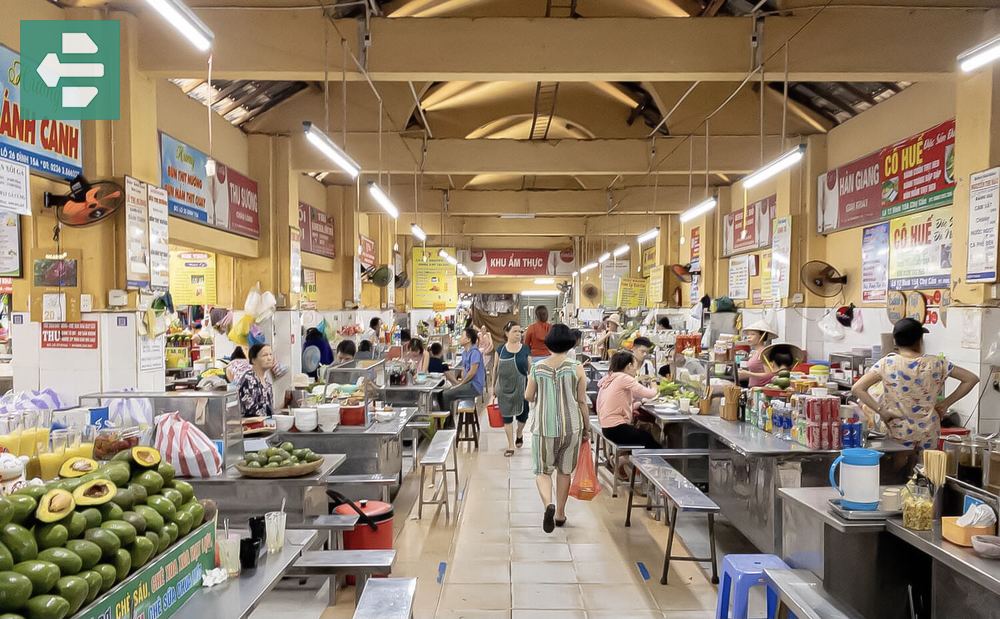
Tourists often ask me which is better – Han Market or Con Market. Here's my honest local perspective:
| Han Market Danang | Con Market Danang |
| Location: 119 Tran Phu Street, Hai Chau | Location: 240 Hung Vuong Street, Hai Chau |
| Scale: 2 floors with 576 stalls | Scale: 3-story and 2-story buildings with 2,000+ vendors |
| Opening hours: 6:00 AM – 7:00 PM | Opening hours: 7:00 AM – 7:30 PM |
| Specialties: Dry goods, fish sauce, clothes, souvenirs | Specialties: Da Nang specialties and street foods |
If you only have time for one, I'd recommend Han Market for first-time visitors. It's more manageable in size, centrally located, and offers a good mix of everything. Con Market is larger but can be overwhelming and is slightly further from the main tourist areas.
Remember that the Han Market closing time is a bit earlier than Con Market, so plan accordingly!
What should you know before your visit to make the most of your experience?
7. Tips for an Amazing Han Market Experience
After helping dozens of foreign friends navigate Han Market in Da Nang, here are my practical tips:
7.1. What to Wear
Da Nang is hot in the summer, especially inside the market where ventilation isn't great. I recommend:
- Light, breathable clothing (cotton is best)
- Comfortable shoes (you'll be walking on sometimes wet floors)
- A cross-body bag rather than a backpack (safer and easier to manage)
- Hat and sunglasses for your journey to/from the market
I once made the mistake of bringing my American friend to the market while she was wearing high heels – big mistake! She was miserable after 30 minutes.
Wondering how to communicate with vendors if you don't speak Vietnamese?
7.2. Language and Communication
While many vendors at Han Market speak basic English, knowing a few Vietnamese phrases makes a huge difference – both in experience and pricing! Here are the basics I teach all my foreign friends:
- “Xin chào” (sin chow) – Hello
- “Bao nhiêu?” (bow nyew) – How much?
- “Đắt quá” (dat qua) – Too expensive
- “Cảm ơn” (cam un) – Thank you
- “Không, cảm ơn” (khom, cam un) – No, thank you
Most vendors have calculators to show prices, so the language barrier isn't a major issue. If you're really stuck, just use your phone to type numbers or use Google Translate.
Want to know what a typical visit is actually like for a local?
8. My Personal Experience at Han Market Da Nang
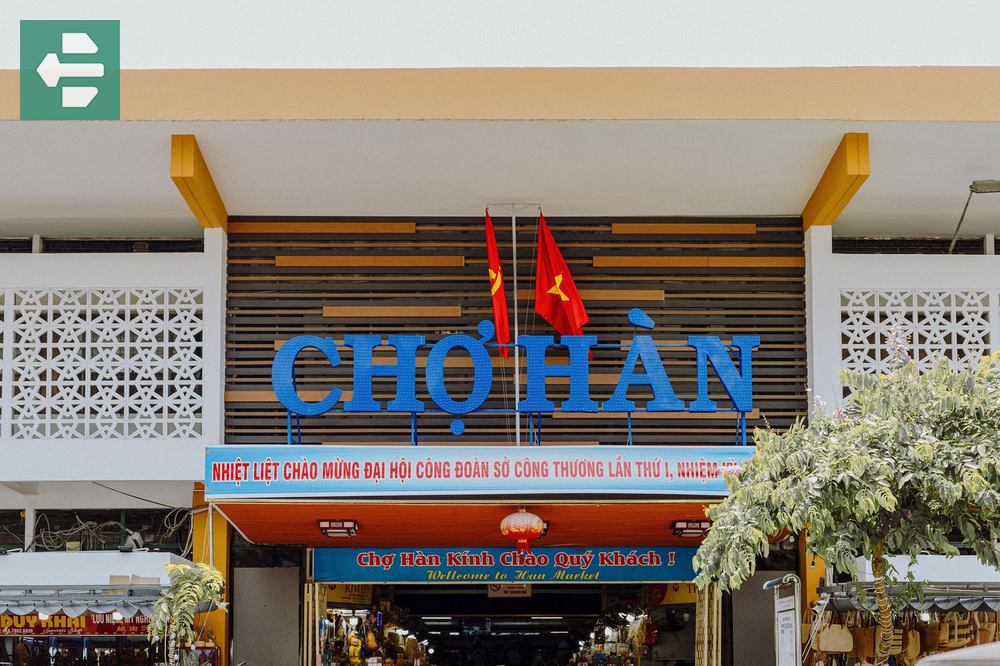
Last Sunday morning, I visited Han Market in Danang to buy ingredients for a family dinner. I arrived around 7:30 AM when the market was already buzzing with activity. First stop: the vegetable section, where I picked up some fresh morning glory and herbs from my regular vendor (she always gives me a little extra!).
Next, I moved to the seafood section for some crabs. The vendor let me pick the ones I wanted and cleaned them for me on the spot. This personal service is what I love about traditional markets – try getting that at a supermarket!
The food stalls were my final stop, where I grabbed a quick breakfast of bánh bèo (steamed rice cakes with shrimp) for just 25,000 VND ($0.96 USD or $1.55 AUD). While eating, I watched an elderly lady expertly filleting fish with lightning speed – these little moments of daily life are what make Han Market special.
What surprised my American friend most on her first visit wasn't the goods for sale but the sense of community. She noticed how vendors chat with regular customers, remember their preferences, and create a shopping experience that feels personal and human.
9. Conclusion: Why Han Market is a Must-Visit
Han Market Danang isn't just a place to shop – it's a cultural experience that gives you insight into authentic Vietnamese life. As someone who has grown up shopping here, I believe it offers something that modern shopping malls simply can't provide – a connection to local culture, traditions, and people.
Whether you're hunting for souvenirs, looking for authentic Vietnamese products, or simply want to experience daily Vietnamese life, Han Market delivers an unforgettable experience.
With its central location, diverse offerings, and cultural significance, it remains one of Da Nang's most essential attractions for visitors. The blend of traditional commerce and tourist-friendly atmosphere creates a perfect entry point into Vietnamese culture.
So when planning your Da Nang itinerary, make sure to block out at least a couple hours for exploring Han Market. Come hungry, bring cash (most vendors don't accept cards), and prepare to experience shopping the Vietnamese way!
Have you visited Han Market? What was your experience like? I'd love to hear your thoughts in the comments below!



